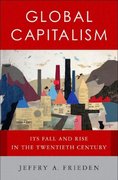Question
Respond to post below The moment the price of a product or service begins to have a significant effect on consumers' demand; it results in
Respond to post below
The moment the price of a product or service begins to have a significant effect on consumers' demand; it results in an elasticdemand.A slight fall in the price of the product results in consumers buying a lot more of the product. Likewise, a slight rise in prices results in consumers stopping to buy a lot of the product and instead wait for prices to normalize or buy alternatives. Also, since the price elasticity of demand reflects the reaction of quantity demanded to a change in price, assuming no changes in the other factors that affect demand, it shows movementsalonga demand curve. A perfect example of a product that I think has a very (price) elastic demand is pizza. For instance,if the price of a slice of pizza that I usually buy every day for lunch rose by $1, I would most likely eat something else instead. This is because pizza is a luxury and not a necessity. Goods that are not necessities (e.g. pizza) tend to have elastic demand. The most relevant determinant of price elasticity in my case is the availability of substitutes.
1.Pick one good or service that you think has very (price) inelastic demand and explain why you think that is the case.Cite one determinant of price elasticity that is relevant to support your case
Price and demand usually move in the opposite direction while the demand curve differs significantly based on a good, more particularly on how necessary the good is.I think housing has a very (price) inelastic demand. For instance, when rental housing or homeownership is looked at closely, does a 2% increase in rent or mortgage rates affect whether a tenant/homeowner will pay or not? Usually, besides irritating the tenant/homeowner, the answer will most likely be no. This is because almost everyone needs a house to live in and there are no alternatives to housing. In this case, housing is considered inelastic, where a significant price increase would be required to really drive down housing demand. In other words, if a product or service has no immediate substitutes/alternatives, its demand is expected to be rather less price elastic. There are no immediate substitutes for housing and the most relevant determinant of price elasticity, in this case, is availability of substitutes.
2.Pick one good or service that you think has very (price) inelastic supply and explain why you think that is the case.Cite one determinant of price elasticity that is relevant to support your case.
Theprice elasticityofsupplydetermines the relationship between thesupplyof a product and itsprice. Said differently, it is the sensitivity ofsupplyto a product's price. The price elasticityofsupply can be elastic or inelastic. Elastic supply implies an increase in price translates to a higher percentage change in supply. Practically, it means a supplier can effortlessly increase supply in reaction to a change in price. On the other hand, inelastic supply implies an increase in price translates to a lower percentage change in supply. What it eventually means is that suppliers have challenges increasing supply in reaction to an increase in price. To effectively respond to the prompt, one of the products that I think has a very (price) inelastic supply is tomatoes during winter. If the price of tomatoes goes up, it is nearly impossible for farmers across the U.S to increase the supply of tomatoes because it all depends on how many tomato seedlings they planted.
One of the determinants of price elasticity of supply that is relevant to support my case is the length of production period. This is because farming (production) is ordinarily a time-consuming process. Therefore, farmers cannot scale it up or slow it down very easily. In most cases, the time required to plant tomatoes and then harvest stretches to several months. Hence, there will be a lagging impact on tomatoes supply.Overall, price elasticity of supply can be easily understood by remembering that when price elasticity of supply > 1, it means the supply is price elastic while when it is < 1, it means the supply is price inelastic.
Step by Step Solution
There are 3 Steps involved in it
Step: 1

Get Instant Access to Expert-Tailored Solutions
See step-by-step solutions with expert insights and AI powered tools for academic success
Step: 2

Step: 3

Ace Your Homework with AI
Get the answers you need in no time with our AI-driven, step-by-step assistance
Get Started


